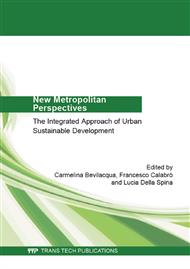p.70
p.79
p.87
p.96
p.102
p.109
p.115
p.125
p.131
The Hinge Areas for Urban Regeneration in Seaside Cities: The High Line in Manhattan, NYC
Abstract:
Aim of this paper is to reflect on how cities, which are growing on the coast and are rediscovering their waterfront, can represent a privileged laboratory to wonder about the destiny of the modern metropolis, through the identification of innovative models of development, through the assumption of the sea as a full of opportunities horizon, a sort of epicenter of a new movement going from the coast to the inner part of the city. That means carrying out regeneration processes in which cities, starting from their maritime culture, realize complete and shared urban transformations. Thus, in continuation of cities’ maritime tradition, integrated transformations aimed at environmental, economic and social development have been carried out by involving several actors and resources, with consequences on the whole urban environment and not only on the narrow coastline.Therefore, the work should be done not only on the narrow line of waterfront, but in a way to involve also the remaining part of the city by redesigning the hinge areas which represent a connection between waterfront and city with its community. In this paper it is showed the case study of the requalification, demanded from the local community, of the High Line in New York, an elevated Railroad placed in residual spaces between sea and city. It represents one of the best practices of regeneration of hinge areas integrated in the waterfronts redevelopment policy and regeneration of the city reached with participation of the urban community.
Info:
Periodical:
Pages:
102-108
Citation:
Online since:
June 2014
Authors:
Permissions:
Share:
Citation:


